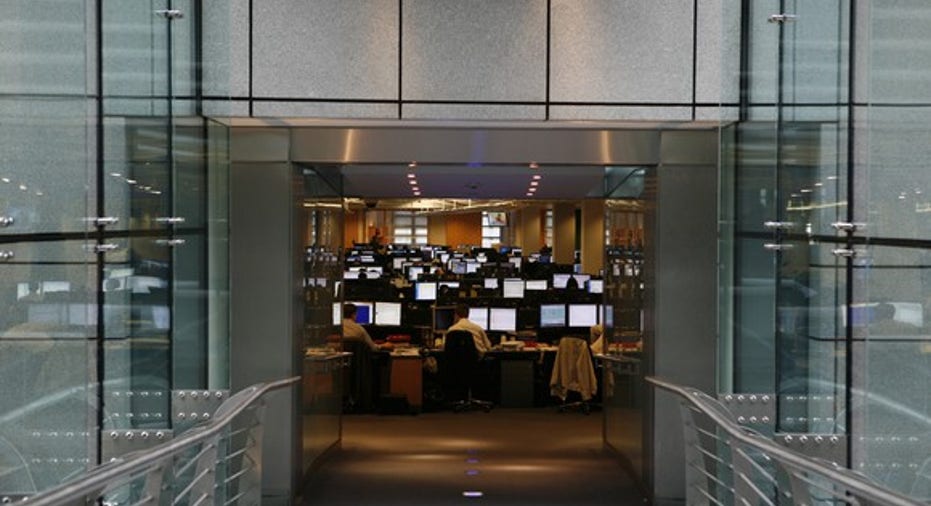Goldman Sachs Stock Split: Will 2017 Finally Be the Year the Wall Street Giant Splits Its Shares?

Among financial stocks, Goldman Sachs (NYSE: GS) has a prestigious position atop the industry. With its reputation for savvy business acumen, Goldman Sachs has been a member of the Dow Jones Industrials since 2013. Yet even though it has been publicly traded since 1999, Goldman has never made the decision to split its stock. With share prices climbing to unprecedented heights recently, however, some investors now believe that 2017 will be the year that Goldman does a stock split. Let's take a look at Goldman Sachs' stock history to see if we can glean any hints about whether a stock split could be coming.
Image source: Goldman Sachs.
When has Goldman Sachs passed up stock split opportunities in the past?
With most stocks that have already done a stock split at some point in the past, history can be a good guide. Often, the same conditions that produce a previous stock split come up again and again, and when companies respond predictably, it can make future moves easier to foresee.
Goldman doesn't have a stock split history, so we can only look at its past share-price performance to see when the company has chosen not to do splits in the past. Since the company's 1999 IPO, Goldman has had ample opportunity to do splits, yet has decided not to follow the same guidelines as some of its peers.
The first opportunity for Goldman to do a reasonable stock split came in early 2000, when its stock climbed to about $130 per share. Many banks have historically kept their share prices in double-digit ranges, and so the sharp move above the $100 mark would have been a typical prompt for Goldman to make a move. As it turned out, that move upward was short-lived, and Goldman stock fell during the ensuing bear market, moving back into double digits and remaining there until early 2004.
The big boom in housing and commodities
Goldman Sachs was an even bigger beneficiary of bull markets in housing and commodities in the mid-2000s. After having clawed back ground from the tech bust, Goldman stock topped out at nearly $250 per share in 2007. The business' prospects flourished as triple-digit oil prices led to a huge amount of investment banking activity in the industry. Moreover, Goldman's trading prowess allowed it to take maximum advantage of strong conditions in financial markets throughout the world, with the rise of emerging markets opening up new opportunities for the investment bank to shine.
Again, though, Goldman chose not to split its shares in response to that big move. And again, Goldman's restraint was justified in the end, because the end of the housing boom, the plunge in commodity prices, and the financial crisis that followed sent Goldman shares back below $100 at their worst levels.
Is 2017 different for Goldman?
Now, Goldman Sachs is going through the same kind of boom it has seen in the past. Having figured out how to heal itself following the financial crisis, Goldman has benefited most recently from optimism about potentially less onerous regulation in the future under the Trump administration. Moreover, rising interest rates should help to make core industry conditions for banking more favorable, and that should help to boost Goldman's prospects as well, along with creating more favorable market conditions for its proprietary traders to exploit.
Yet some shareholders will note that the big boom in Goldman shares comes from many seemingly investing in the best-case scenario for the investment bank. With plenty of challenges in global markets and the prospects for icier trade relations that could eventually endanger financial market stability, a reasonable bear case for Goldman exists, and that could send shares falling from their recent trip higher.
Perhaps the most important sign about Goldman's likelihood of doing a stock split is that the company has said nothing about it. Indeed, a quick search of earnings call transcripts over the past several years found no mentions of possible stock splits at all.
That said, there is one reason why Goldman might do a split: to keep relations strong with the overseers of the Dow. Right now, Goldman has the biggest weighting of any Dow stock, making up more than 8% of the average. That's more than the bottom seven Dow components combined. A split would make that disparity less extreme.
2017 will be a key year for Goldman Sachs. If its recent success again proves short-lived, then the investment bank likely won't consider a stock split. If, however, the recent rise continues higher, then Goldman won't wait forever to make its first stock split in its history.
10 stocks we like better than Goldman Sachs When investing geniuses David and Tom Gardner have a stock tip, it can pay to listen. After all, the newsletter they have run for over a decade, Motley Fool Stock Advisor, has tripled the market.*
David and Tom just revealed what they believe are the 10 best stocks for investors to buy right now... and Goldman Sachs wasn't one of them! That's right -- they think these 10 stocks are even better buys.
Click here to learn about these picks!
*Stock Advisor returns as of Nov. 7, 2016
Dan Caplinger has no position in any stocks mentioned. The Motley Fool has no position in any of the stocks mentioned. The Motley Fool has a disclosure policy.